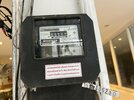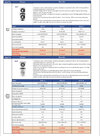dgpcolorado
high altitude member
Being energy conscious was a goal in designing my house and using an on demand water heater: it only heats water when the water flows, rather than heating a tank that just sits most of the time. Back then I was on propane and it was expensive and had annoying yo-yo pricing patterns.Sounds like yours meets your needs and you use only 2 therms/ month for combined cooking and water heating. That's truly impressive. You are probably in the lowest 1 percentile for energy use in these categories, so A+ for low energy use.
Environmental benefits aside, for the large majority of Americans, though, a HPWH (new property install or upgrade) will probably pay for itself within a few years given EIA data above.
Back in 1999 my judgment was that ground source heat pumps, for space heating, weren't ready for prime time, at least in my area. Air source heat pumps weren't "a thing" back then, so far as I was aware. So, I went with an inexpensive forced air furnace. Initially propane, later NG when lines were extended to my remote rural neighborhood (to my considerable surprise).
Keeping energy use down has been a goal for decades, both to save money, since I live entirely on savings, and to avoid waste. Same reason I bicycle commuted for two decades, 43,000 miles, before retiring to the mountains.
To save on energy I designed my house to be "sun tempered": long axis facing due south and windows sized for good solar gain, following a formula for my climate zone that I got from a seminar on the subject at NREL in Golden CO. To keep heating costs down I set the thermostat at 62° mornings and evenings and 52° at night, and dress appropriately in winter (what a concept!).
Before I put in my first solar panels in 2008, my electricity use averaged 4.5 kWh/day, more in winter when the furnace blower is running and less in summer, of course. (No AC needed in the mountains, summer is windows open at night and closed during the day.)
My energy conservation efforts work. Even with NG prices much higher this winter, my bill maxed out at $108 for January. I can afford that. The downside of already being energy conscious is that the truly gigantic cost of going all electric makes zero financial sense. So, I drive my solar- powered electric car, keep the thermostat down in my house and just conserve energy, same as always.
It would be nice to live fossil fuel free but I can't afford it.




